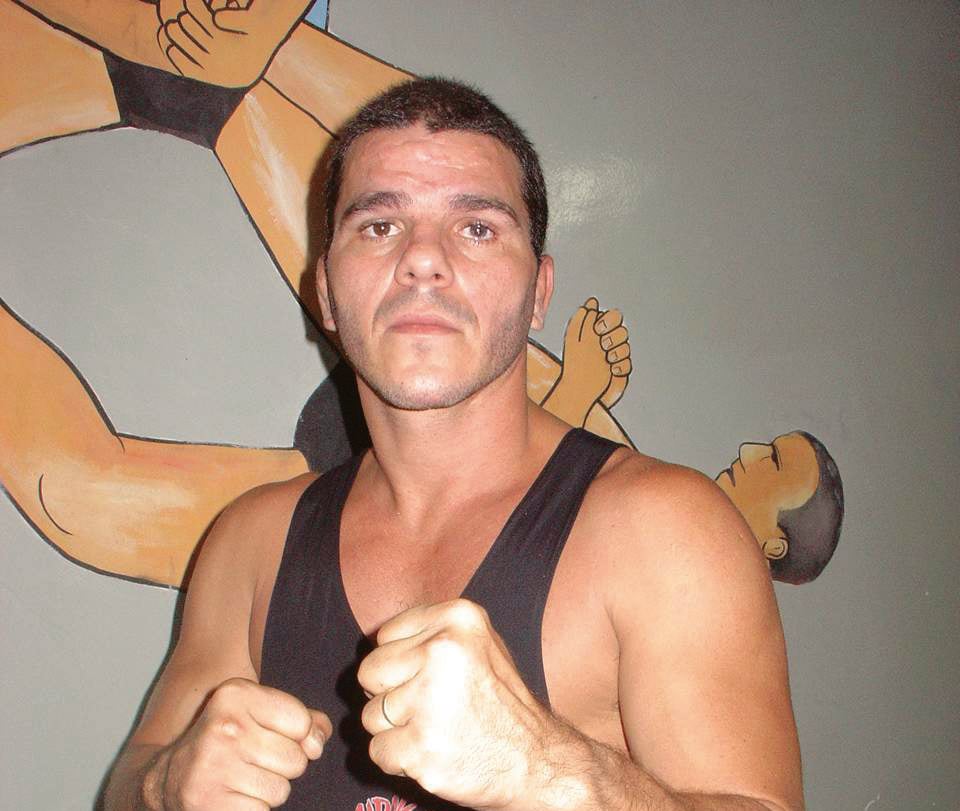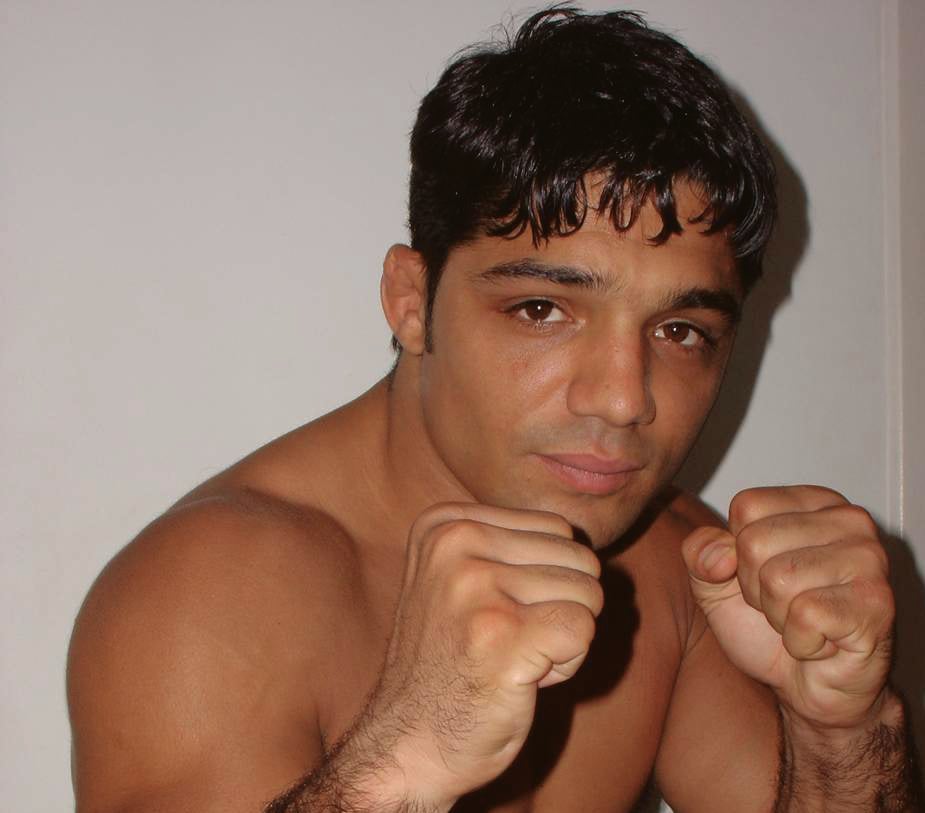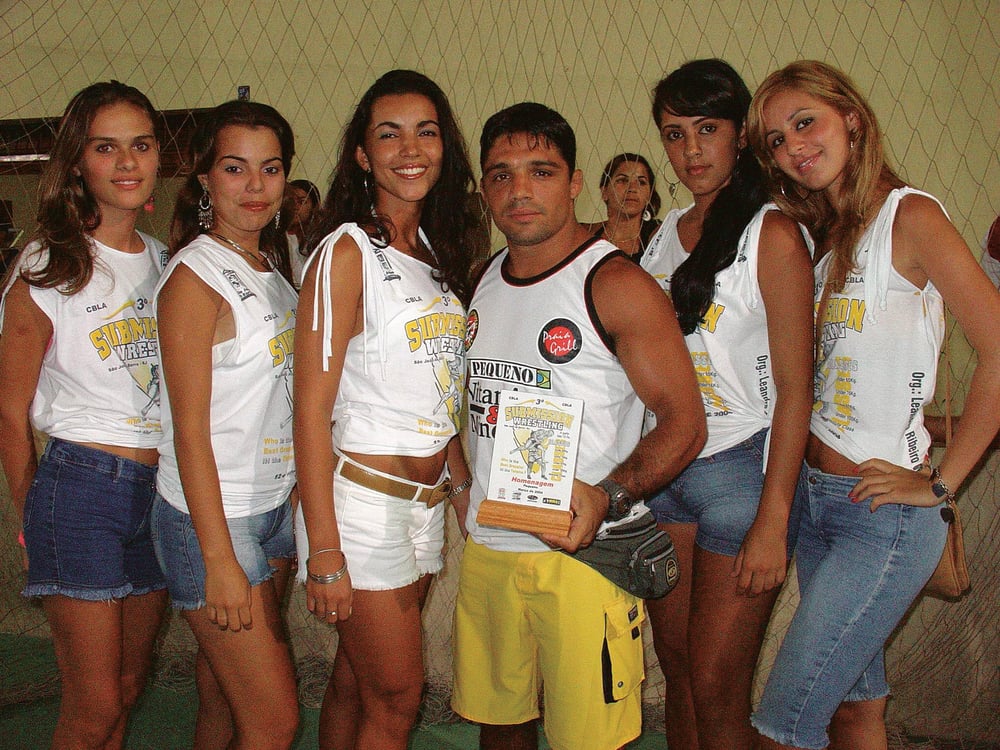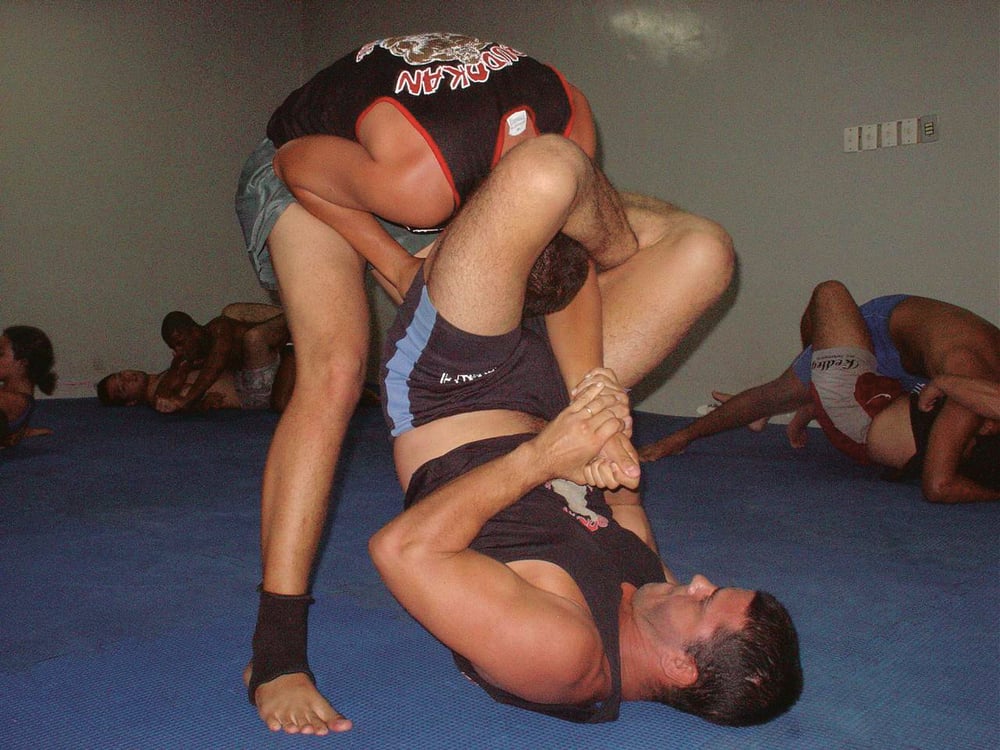
Issue 003
May 2005
Have you seen this martial art lately?
Luta Livre (LL) has nearly as old a history in Brazil as Jiu-Jitsu but it has been virtually forgotten on the MMA evolutionary scale.
Why did it happen?
WHAT’S IT ALL ABOUT?
First, we need to address the basics. What is Luta Livre? Well friends, Luta Livre can be broken down to ‘Luta’ meaning ‘wrestle’ and ‘Livre’ meaning ‘free’. Not literally ‘free fighting’ as it has been misidentified for many years now. The phrase can be translated to ‘free wrestling’ or ‘free for all wrestling’ and dates back to the 1920s. Well, we know Carlos Gracie opened up his first Jiu-Jitsu academy in Belem in 1925. Guess what? The Luta Livre Esportiva style (translates to ‘Sporting Free Wrestle’) has been practised in Brazil since 1927. This art encourages the practitioner to choke, lock and throw their opponent. However, they do not use protective equipment and there is no striking of any kind because it is considered a sporting style. Tatu, Fausto and Carlos Brunocilla make up the foundation of the Brunocilla Luta Livre Team, along with Marcelo Mendes and Beto Carioca.

Hugo Duarte, Eugênio Tadeu and Denilson Maia also trained at Equipe Brunocilla. Later, with Master João Ricardo, they helped Budokan Luta Livre grow to the strongest Luta Livre school in existence. And you could find Lirton Monassa at the Olympico Club, Leopoldo Serão at Clube de Luta, Antonio Oliveiro Benvindo (aka Master ‘Tauro’), Mario Miglio, Roberto Leitão or even descendants of Manoel Rufini dos Santos. Luta Livre is alive, you just have to find it.

Some say the fighting aspects of Luta Livre developed from Catch As Catch Can and Freestyle Wrestling. In fact, it is said the rivalry between Brazilian Jiu-Jitsu (BJJ) and Luta Livre was initially a rivalry between judo and Gracie Jiu-Jitsu and the art of Greco-Roman Wrestling. Still others say that the major difference between BJJ and LL is that Luta Livre is more focused on striking and incorporates some of the skills of Western boxing and Muay Thai. This is an interesting hypothesis, given the fact that Muay Thai and Western boxing are purely a standing art.
Many have heard about the legendary Brazilian Jiu-Jitsu vs Luta Livre war but for those who are new to the sport or simply unaware such a rivalry took place, here’s a little history lesson for you.
The bad blood was most intense in the late 1980s but it dates back to before the 1950s. In fact, the father of Gracie Jiu-Jitsu, Master Helio Gracie, fought Luta Livre champion Manoel Rufini dos Santos in 1935 at the Tijuca Tênis Clube of Rio. (From a Helio Gracie interview in the Brazilian edition of Playboy, 2001.)
Some feel the rivalry is a case of classism that still exists in Brazil today. Poor children practice Luta Livre, due to the fact you need no uniform, and children who are better off practice Jiu-Jitsu. (From MMA History: Luta Livre vs Brazilian Jiu-Jitsu by J Mendoza.)
There is speculation that the 1980s rendition of the rivalry started when a Brazilian Jiu-Jitsu black belt aligned with the Gracie clan began picking fights on the beach. He got into it with a Luta Livre fighter and promptly defeated him. It supposedly happened again when another Luta Livre fighter tried to even the score. What is definitely fact is that Hugo Duarte and Rickson Gracie threw down at Pepê Beach in 1989.
This event was filmed and can be seen on the Gracies In Action 2 compilation fight video. They fought again days later on the patio of a public school (Padre Antônio Vieira) in Rio de Janeiro, where a Gracie academy still exists. Rickson won again but this time it was not filmed. Another landmark bout was between Eugênio Tadeu and Royler Gracie. The bout got underway but before long the police arrived and the school cleared out. Tadeu would fight Royler again in another private bout and he later faced Renzo Gracie in the Pentagon Combat event.
In September 1991 the Desafio: Jiu-Jitsu vs Luta Livre event took place. By some accounts, Wallid Ismail was responsible for instigating the event. There were three bouts: Ismail (JJ) vs Eugênio Tadeu (LL), Murilo Bustamante (JJ) vs Marcelo Mendes (LL) and Fabio Gurgel (JJ) vs Denilson Maia (LL). Jiu-Jitsu dominated the event, winning all three bouts, and none of the contests went the distance. There was to be a fourth bout on the card between Marcelo Behring and Hugo Duarte but Behring was killed before the event took place. (From The History of Gracie Jiu-Jitsu by George Wang.)

The question has been asked many times before; when we see submissions and ground fighting in MMA, is it simply an extension of Brazilian Jiu-Jitsu — as many would have you believe — or is it really the somewhat forgotten art of Luta Livre?
For more than a decade we’ve seen stand-up encounters go to the mat and the combatants grapple for position or submission. Today, every Mixed Martial Arts (MMA) school worth its salt cross-trains, and few fighters need to seek training outside of their home facility. They train for the ground as part of their general fight preparation and no real thought is given to where those techniques originated. You simply work your set submissions on the mat: armbar, triangle choke, Kimura arm lock, key lock, lapel chokes and so on. When questioned about the origin of these moves, most athletes would instinctually attribute them to Jiu-Jitsu. Is this correct?
Well it depends on who you ask. Some feel Jiu-Jitsu with a gi is ‘more intelligent’ because of the positioning, grips, and submissions applied. By the same thinking, training without the gi is easier because you can use brute force to maneuver out of positions without really knowing how to defend the position properly. If you have trained Jiu-Jitsu with a gi and practiced how to use or escape a position correctly, you may be able to conserve your strength for when you truly need it. No gi competition opens the door for other styles to compete, such as Freestyle and Greco-Roman Wrestling, Shoot Fighting, Dumog, Turkish Wrestling. However, those who train with a gi often perform better than those who have never donned one.
On the other hand, there is a school of thought that believes training with a gi is counter-productive to preparing for MMA or NHB (No Holds Barred) fighting competitions. Very few competitors wear a gi or even a shirt to compete any longer. With many techniques dependant on securing a particular hold on your opponent’s clothing, some techniques translate poorly to the ring or cage.
In its long history many fighters have waved the Luta Livre flag and the most recognisable names were the heroes who fought all over the world. Men like Hugo Duarte, Eugênio Tadeu and Johil de Oliveira have struck fear into the hearts of many opponents over the years.
Fighters such as Pancrase veteran Evangelista ‘Cyborg’ Santos, UFC veteran Flávio Luis Moura and Shooto champion Alexandre ‘Pequeno’ França Nogueira came on the scene years later.
Many warriors took part in the International Vale Tudo events like Budokan Luta Livre team fighters Ebenezer Fontes Braga, Artur Mariano (stopped Wanderlei Silva), ‘The Pedro’ Otavio and Flavio ‘The Budokan Demon’ Luis Moura. Members of the Ruas Vale Tudo (RVT) camp originally claimed Luta Livre as their style, such as Pedro Rizzo, Renato ‘Babalú’ Sobral, Gustavo ‘Ximú’ Machado, Alexandre ‘Cacareco’ Ferreira and Ruas himself. Over the years many memorable Brazilian Jiu-Jitsu vs Luta Livre bouts have taken place in the International Vale Tudo Championship (IVC) and Universal Vale Tudo Fighting (UVF) events including de Oliveira/Ismail, Otavio/Navalhada and Landi-Jons/de Oliveira. (Note: Moura, Braga, Sobral, Ferreira and Machado are all part of the Gracie Barra Combat Team now.)
One reason Luta Livre has taken a backseat to Brazilian Jiu-Jitsu is due to the popularity of the Gracies and their success in spreading their family’s art.
I interviewed Luta Livre legend Johil de Oliveira some time ago and he broke it down for me. “Cyborg, Moura, The Pedro and the RVT fighters aren’t the real Luta Livre representatives. They have a no-gi background, but they don’t represent the true Luta Livre style. A lot of them just trained at Budokan or represented us,” he stated.
“The exception is ‘Cacareco’, who is one of Duarte’s Luta Livre black belts. Nowadays he doesn’t represent the Luta Livre but the Gracie Barra Combat Team. Cyborg, The Pedro and Moura represented us, but they were Muay Thai fighters and kickboxers. Unfortunately, Duarte and Tadeu didn’t get the success in the new MMA era. They were the pioneers, represented Luta Livre and got wins in the UVF, but when the sport grew they didn’t win fights. Actually, the only real Luta Livre fighter today is Pequeno. He has already trained with Brazil Top Team (BTT) but he is a Luta Livre fighter and raises the Luta Livre flag. Actually, when I come back to the MMA scene Pequeno and myself will be the only two guys representing this martial art. I am very sad because the Luta Livre fighters turned their backs on this martial art and created or represent others styles,” he finished.
















